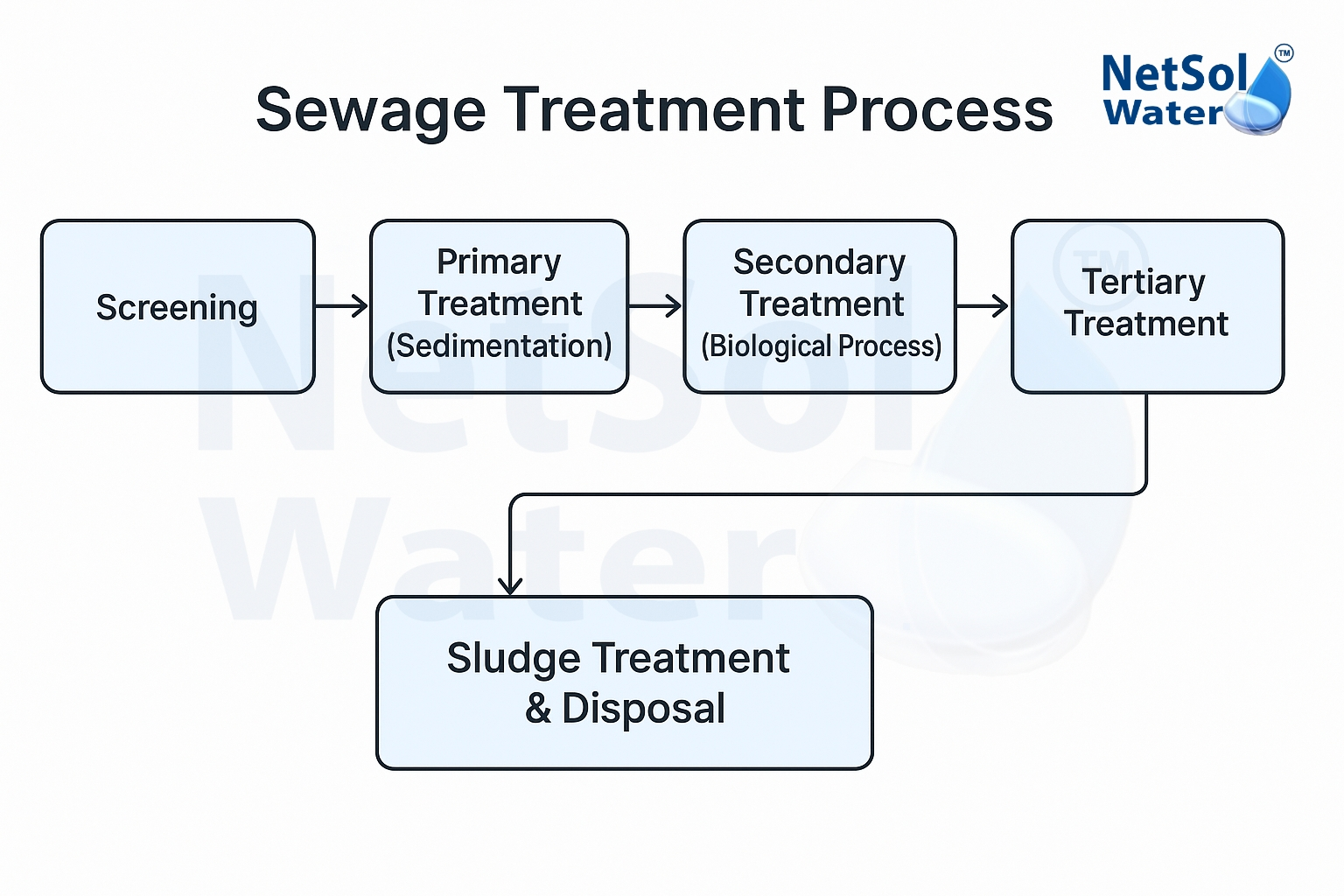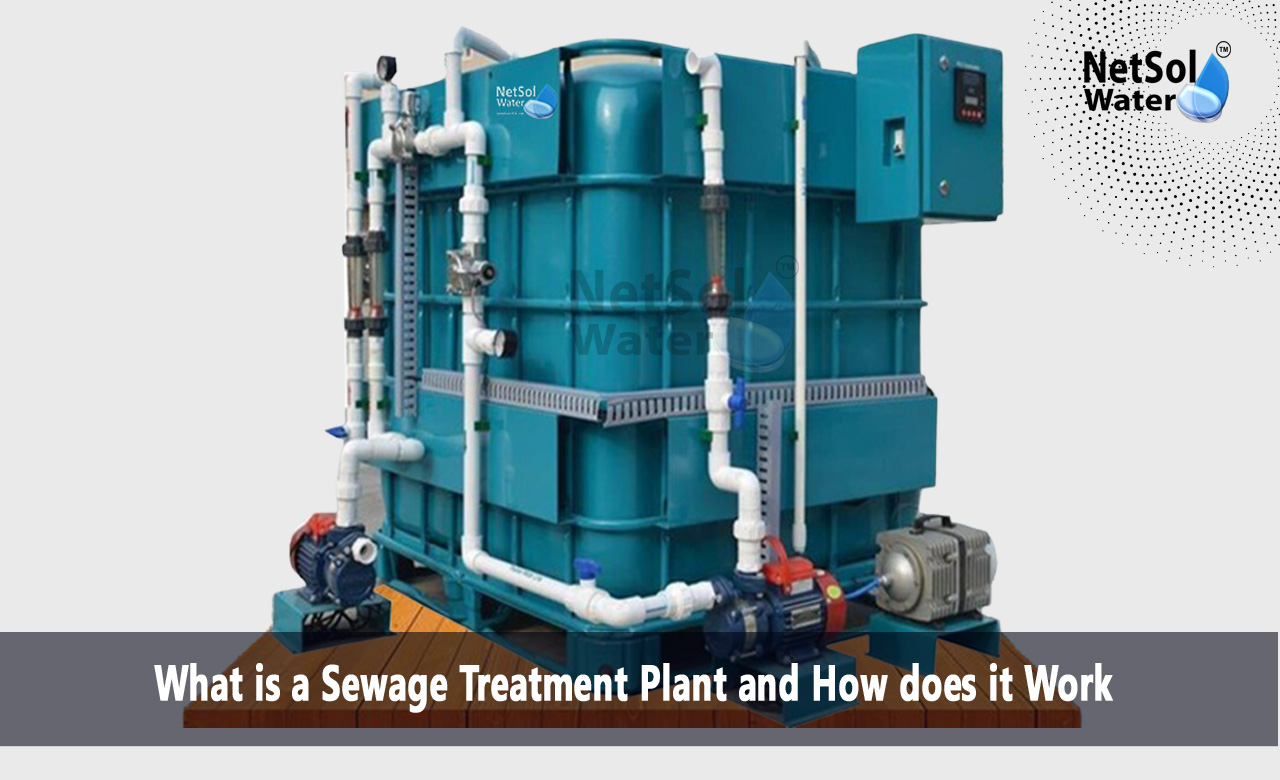What is a Sewage Treatement Plant (STP) and How does it Work?
Sewage treatment plants transform contaminated human generated wastewater from houses, commercial spaces, and industries into clean water that meets environmental standards. Each day, billions of gallons of water travel through vast networks of underground pipes to reach these treatment centres. The advanced treatment processes employed by these facilities ensure the complete removal of contaminants, preparing water for a safe return to the environment. Many industries and infrastructure projectsdepend on Sewage Treatment Plant Manufacturer to ensure compliance with environmental regulations and long-term operational efficiency.
What is a Sewage Treatment Plant?
A sewage treatment plant operates as an essential purification centre for community wastewater management. These advanced facilities process wastewater streams from households, commercial establishments and industrial operations, converting contaminated water into environmentally acceptable water. Treatment plants incorporate sophisticated engineering systems that collaborate seamlessly to deliver superior water quality. The advanced design of these facilities enables them to address diverse water contamination challenges.
Sewage treatment plants incorporate an array of processing units. Each piece of specialized equipment contributes unique functions to the treatment sequence. Advanced engineering creates optimal flow patterns through treatment phases. The harmonious operation of integrated systems delivers consistent water quality results. Treatment plants create an effective shield protecting natural water bodies from pollution. These facilities preserve the purity of rivers, lakes and coastal environments. The meticulous operation of treatment plants sustains healthy aquatic ecosystems. Environmental monitoring confirms the continued effectiveness of treatment processes.
An STP (Sewage Treatment Plant) is a system designed to treat wastewater generated from residential, commercial, and institutional facilities. The treatment process removes contaminants, organic matter and harmful microorganisms, making the water safe for discharge or reuse in non-potable applications.
How Does a Sewage Treatment Plant Work?
Sewage treatment plants transform wastewater through multiple sequential stages. The process starts with preliminary filtration followed by three main treatment phases - primary secondary and tertiary treatment. Each stage targets specific contaminants using specialized processes. This systematic approach ensures thorough water purification.
Preliminary Treatment
The treatment process begins as wastewater enters the plant network. Strong screens catch large objects sand, grit and debris. Flow attenuation pushes water through the screening system, removing particles that could damage equipment. The preliminary stage prepares water for more intensive treatment phases.
Primary Treatment Stage
Primary treatment focuses on separating solid materials from water. Powerful pumps move sewage into large sedimentation tanks. Gravity pulls solid materials to the tank bottom creating a sludge layer. The process separates clear water, which moves to the next stage. The remaining sludge requires additional processing. Some treatment plants transform this sludge into fertilizer through dewatering processes. However heavily contaminated sludge must undergo incineration for safe disposal.
Secondary Treatment Stage
Secondary treatment introduces biological processes to eliminate organic contaminants. This stage employs two main methods - activated sludge treatment and filter bed systems. Activated sludge treatment uses aerated ponds where beneficial bacteria break down harmful substances. Filter bed systems direct sewage over aggregate materials where bacteria consume pathogens. After secondary treatment water often meets basic safety standards. Plants can release this water if it presents minimal risk to humans animals and the environment.
Modern sewage treatment plants use advanced technologies such as Moving Bed Biofilm Reactor (MBBR), Sequential Batch Reactor (SBR), Activated Sludge Process (ASP), and Membrane Bioreactor (MBR). These technologies improve treatment efficiency, reduce space requirements, and ensure consistent treated water quality.
Tertiary Treatment Stage
The final stage enhances water quality beyond standard requirements. Tertiary treatment becomes essential when water enters sensitive environments like bathing areas or shellfish habitats. The process removes additional nutrients particularly phosphorous which can harm aquatic ecosystems. Treatment methods include microfiltration, which forces water through microscopic holes in ion exchange systems that swap harmful ions for benign ones, activated carbon filtration to remove organic materials and disinfection using ultraviolet light or chemical treatments to eliminate remaining pathogens.
This treatment sequence transforms contaminated wastewater into clean water. The process combines physical, chemical and biological methods to achieve optimal results. Modern sewage treatment plants continuously monitor and adjust these processes to maintain consistent water quality standards.
Treated water from sewage treatment plants can be reused for various non-potable applications such as landscape irrigation, toilet flushing, cooling towers, construction activities, industrial processes, and groundwater recharge (as per regulatory norms). Reuse of treated wastewater helps conserve freshwater resources and reduces environmental impact.
Sludge Treatment
The sludge generated during the sewage treatment process is further treated through thickening, dewatering and drying. Proper sludge management ensures safe disposal or reuse in accordance with environmental guidelines.

Why Do We Need Sewage Treatment Plants?
Sewage treatment plants deliver essential public health protection. These facilities shield populations from waterborne disease transmission. Treatment processes safeguard environmental resources for future generations. Modern society depends on effective sewage treatment for sustainable development.
Public Health Protection: Treatment plants destroy harmful pathogens in wastewater streams. Advanced processes remove dangerous chemicals from contaminated water. Comprehensive treatment blocks disease transmission pathways. Communities flourish with access to clean water resources.
Environmental Preservation: Treatment facilities maintain strict water quality standards before environmental release. Advanced treatment protects sensitive aquatic ecosystems from contamination. Healthy wildlife populations depend on clean water resources. Treatment plants support environmental sustainability goals.
Uses of Treated Water from Sewage Treatment Plant
Treated water from sewage treatment plants can be reused for various non-potable applications such as landscape irrigation, toilet flushing, cooling towers, construction activities, industrial processes and groundwater recharge (as per regulatory norms). Reuse of treated wastewater helps conserve freshwater resources and reduces environmental impact.
FAQs
Can STP water be reused?
Yes, treated STP water can be reused for gardening, flushing, industrial applications, and other non-drinking purposes.
Which STP technology is commonly used?
Common sewage treatment plant technologies include MBBR, SBR, ASP, and MBR, selected based on wastewater characteristics and treatment requirements.
Contact Our Sewage Treatment Experts
Our experienced team delivers professional guidance for sewage treatment plants. We provide comprehensive consulting services addressing all treatment requirements. Our specialists create tailored solutions for unique treatment challenges. Contact us to discover how professional sewage treatment enhances operational efficiency.
Contact Netsol Water at:
Phone: +91-965-060-8473, Email: enquiry@netsolwater.com



